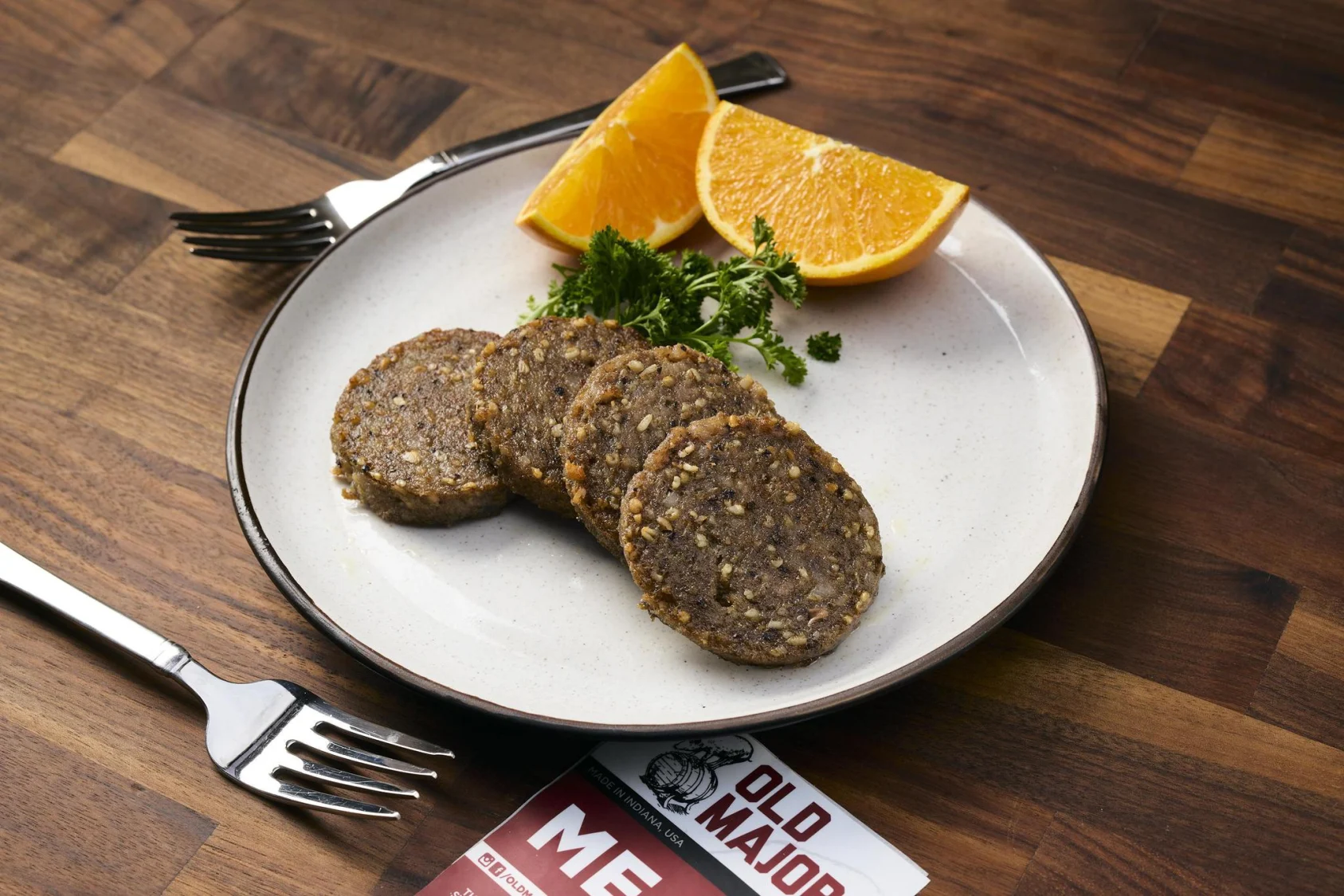
Black and White Pudding
Traditional Irish breakfast items - black pudding made with blood and oats, white pudding made with pork and oatmeal.
Ingredients
- •Pork meat
- •Oatmeal
- •Pork blood (black pudding)
- •Onions
- •Spices
- •Salt
- •Pepper
- •Pork fat
Instructions
Mix Ingredients
Combine meat, oats and seasonings
Fill Casings
Stuff mixture into casings
Cook
Poach puddings in water
Cool
Allow to cool and set before slicing
Black and White Pudding are quintessential components of a traditional Irish breakfast, representing centuries of culinary craftsmanship. While they share similar preparation methods, these two varieties offer distinctly different flavors and appearances. Black pudding, known for its deep, rich color, is made with pork blood, meat, fat, oatmeal, and spices, while white pudding omits the blood but includes pork meat, fat, suet, breadcrumbs, and oatmeal.
The history of these puddings dates back to ancient times when communities would use every part of the animal to prevent waste. This practice became particularly important during periods of economic hardship in Ireland, where these puddings provided a hearty, protein-rich meal that could be preserved for extended periods.
The preparation of these puddings is a meticulous process that requires skill and patience. The ingredients are carefully mixed with various spices, including pepper, salt, and sometimes herbs, before being stuffed into natural casings. The puddings are then gently poached in water until fully cooked, after which they're allowed to cool and set. This process creates their characteristic firm texture that allows them to be sliced and fried before serving.
While traditional recipes remain popular, modern variations have emerged to cater to different dietary preferences. Some artisanal producers now offer gluten-free versions using alternative grains, while others create vegetarian white pudding using mushrooms and nuts for texture. The spice blend can also vary by region and producer, with some adding distinctive ingredients like pennyroyal or marjoram.
In Ireland, these puddings are most commonly served as part of a full Irish breakfast, alongside bacon, eggs, mushrooms, and tomatoes. They're typically sliced and fried until crispy on the outside while remaining tender inside. Some contemporary Irish restaurants have begun incorporating these puddings into more innovative dishes, using them in salads, stuffings, or as garnishes for sophisticated plates.
From a nutritional perspective, both black and white pudding are calorie-dense foods, with a typical serving (100g) containing approximately 350-400 calories. Black pudding is notably high in iron and protein, thanks to its blood content, while both varieties provide a good source of B vitamins. However, they are also high in saturated fat and sodium, so moderation is advised. Those with dietary restrictions should note that traditional versions contain gluten from the oats and breadcrumbs, and may not be suitable for those with certain allergies or dietary requirements.
